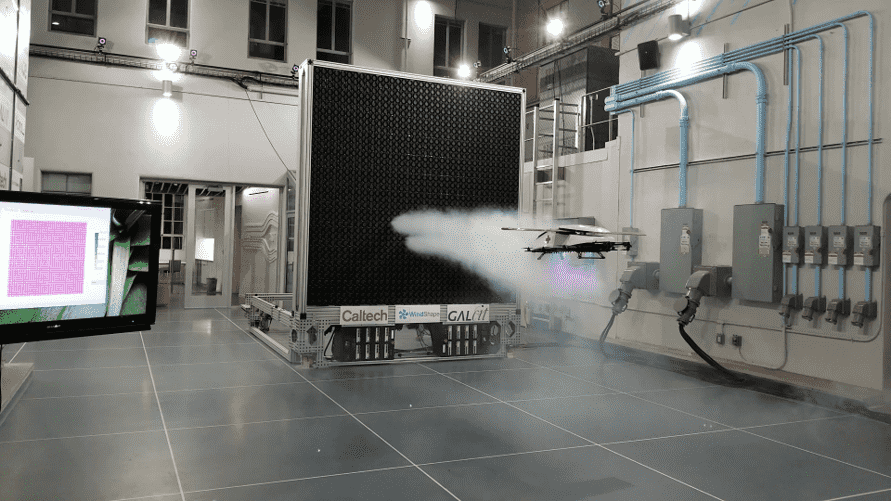UAVs Face Headwinds, Tailwinds, and Downdrafts: What’s a Drone to Do?
CalTech Engineers Are Working on the Solution

Getting whisked about in an unpiloted air taxi may sound like a cool way to beat urban traffic in the future. But the scenario’s also unnerving for many prospective paying passengers.
There are several reasons for that dread. Humans have an inherent distrust of the “unmanned” part of the equation. As passengers of conventional taxis, we have the chance to be backseat drivers; what if there’s no one in the pilot’s seat to listen to our advice?
Anyone familiar with Murphy’s Law – “Anything that can go wrong, will go wrong” – knows that it’s true enough on the ground. What if the weather gets ugly during an unmanned flight – sudden gusts of heavy winds or even a tornado?
Neural-Fly in Action
Researchers at the California Institute of Technology (Caltech) are working on it. The results of their experiments with teaching unmanned aerial vehicles (UAVs) how to safely adapt and stay on course in different wind conditions using artificial intelligence (AI) and machine learning were published in the May, 2022, edition of Science Robotics.
“Neural-Fly Enables Rapid Learning for Agile Flight in Strong Winds,” describes the engineers’ work in training drones how to correct flight patterns in strong winds at varying speeds.
First, Caltech engineers used a simple controller to collect data in different wind conditions. Engineers used 12 minutes of data at six different wind speeds to build the model.
The researchers then used this pre-programmed data to test how their 2.3-kilogram (5-lb) drone responded to various wind conditions in the wind tunnel at Caltech’s Center for Autonomous Systems and Technologies (CAST). The wind tunnel uses the power of 112 computer-controlled fans to mimic everything from a light wind to a tornado. The Neural-Fly technology recalculated surrounding airflow five times per second, allowing the drone to adapt to gusts up to 27 miles per hour and resist going off-course.
Future Uses of Smart UAVs
Researchers predict the technology could be used in various ways in the future. For example, they envision autonomous air ambulances large enough to medevac injured people from dangerous situations. Assisting in remote explorations is another possibility. Finally, there’s always the more mundane but important task of accurate package delivery or transportation of goods.
“In the future if we have 3-D flying cars flying in the air, it’s very important to have precise control because you want to make sure the flying car can track the trajectory very accurately,” said researcher Guanya Shi, a PhD candidate in the Computing and Mathematical Sciences department at Caltech. “Our long-term mission is we want to generalize the technique to not only quadcopters, to flying cars, to any area’s robots, such that they can accurately, safely, do complicated tasks.”


